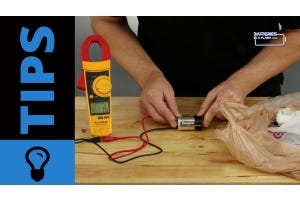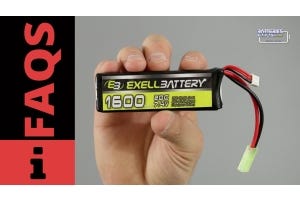How to Replace a Boat or Jet Ski Battery

A properly charged battery provides the power to crank the engine and run any electrical components while you are out on the water. Although batteries can last for several years with proper maintenance and charging techniques, some avid boaters replace their batteries more often to ensure that their electrical system delivers the best possible performance. This guide provides tips that will help you replace the batteries in your boat or Jet Ski.
Select the Right Replacement Battery
If you have multiple batteries in your boat, purchase a replacement that is compatible with your current equipment. The best devices for watercraft are deep-cycle batteries because they can discharge up to 80 percent of their stored capacity. Although these devices cost more than their marine counterparts, you can perform a deeper discharge without shortening its life. Generally, marine batteries are rated to discharge 50 percent of their capacity. Avoid mixing old and new batteries because it can reduce the performance of your watercraft. You should also ensure that the amperage rating of the batteries provides the power that you need to start your boat or Jet Ski motor.
Remove the Old Battery
Prepare a solution with a 50-50 ratio of water and baking soda to neutralize the corrosive effect of battery acid, and wear protective gear to safeguard your eyes and skin. Latex gloves can provide the dexterity that you need while protecting your hands. Locate and open the compartment to access your batteries, and disconnect the earth connector, which is the black terminal with the negative sign. This will eliminate the risk of an electrical short in the system. Next, remove the clamp from the red terminal with the plus sign. Finally, properly dispose of the old batteries.
Install the New Battery
Clean the terminal clamps with a wire bristle brush, and replace any clamps and cables that are broken, damaged, cracked or frayed. Install the new device in the compartment, and coat the clamps with white lithium grease to repel water and prevent rust. Connect the cables in the reverse order that you removed them from the previous device. Attach the red clamp and then the black one. Secure any newly installed batteries in place, and use a charger designed to perform deep-cycle charges. You can determine the specifications by checking your owner’s manual. A smart charger can help you avoid over- or under-charging errors that can destroy your batteries. When the new unit is fully charged, disconnect the charger and close the battery compartment.
Conclusion
You should replace your batteries before the end of the warranty period. Some industry sources recommend swapping out the units every two years or sooner. This will ensure that you have the stored electrical power to operate your electronic devices on the water and still have the cranking power that you need to start your engines for the trip back home.






